Wewak, Papua New Guinea
As we delve deeper into the unknown we lose ourselves. Every kilometre, every hour everything changes. What were once paved roads become bumpy dirt tracks, manicured forests grow wild like a scene from the prehistoric era. Even the looks the locals give us when they notice a truck full of foreigners driving into the unknown are unnerving. Papua New Guinea’s Sepik region is not for the faint of heart, it is a raw, lawless, tribal land that explorers dream of. As the jungle gets thicker, and the sun begins to set you can almost hear the beat of the tribal drums along the Sepik River. Welcome to Papua New Guinea and the Sepik River.
Wewak, Getting to the Sepik River
Open any guide book and it will tell you that Wewak is the entry point for those looking to venture into the Sepik region. This is correct! However, the guide books forget to mention that coming to Wewak to travel the Sepik independently is a logistical nightmare.

Wewak is a small community located on the coastal northern regions of Papua New Guinea. From Wewak, there are roads to the Sepik, but almost zero public transport, and little to no information on the region in between Wewak and the Sepik. Guide books will also tell you the only way to reach these regions is to join a pricey packaged tour, usually costing about 2000 US for only a few days on the Sepik.
Landing in Wewak my backpacking crew and I were destined to travel the Sepik independently just as adventurers before us had. We checked out different options at Sepik Adventure Tours, and the Boutique Sepik Hotel, both of which offered overpriced tours that only the truly wealthy could afford.
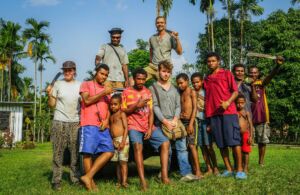
Wewak is a small town and being turned down by the main tour operators was disheartening. It was getting late so we checked into a guest house called Warihe. Rooms were cheap and decently clean, but nothing to get excited about. Little did I know that this ramshackle guesthouse would be my key to unlocking the Sepik!
Hitting the Road to Maprik
In the morning, the owner of Warihe, Anton, Introduced himself to me. I explained how my three backpacker friends and I were wanting to get to the Sepik on our own. Anton suggested driving there. Perplexed with this suggestion, I instantly became intrigued, and asked Anton to elaborate this idea.
“The roads are decent, if you can drive off-road then you can drive to Pagwi, and get a boat from there” Anton said.
After some negotiating, and a few SP beers we agreed to 100 US per day for a 4×4 truck, and a security man named Stan to tag along with us. We had only the map in the Lonely Planet, and our sense of adventure to guide us.
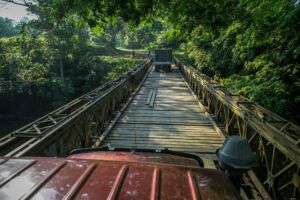
Luckily for us a local Sepik man named Leo approached us while we prepared the truck. Leo was an elderly man who was from a region called Wamerak which was near Pagwi and the Sepik River. Leo had been a tour guide for many years. He offered to guide us wherever we wanted in the Sepik region for 20 US a day! And would help us stay with locals.
In Wewak, we picked up food and water from the grocers, and gasoline for the truck. Leo also told us to get machetes. I asked him “will we be cutting through the jungle?” Leo exclaimed we will need machetes for protection, the Sepik is lawless, if you have machete no one bothers you, if you don’t, well… With that my crew and I each bought our own machete that called to us, and of course we named our new blades as well.
From Wewak, the heavily potholed road winds through the mountains south. You must drive very slow as the potholes are deep, and more than often there are people or livestock on the roads here. After an hour, we arrived at a small market town, here we picked up sausages and bananas for the long bumpy road ahead.
Maprik’s Haus Tambarans
Maprik is the first stop along the way to the Sepik from Wewak. From Wewak, it is about a 2.5-hour drive to Maprik. There isn’t much in Maprik itself apart from an ATM (doesn’t work often, don’t depend on it) and a few hardware stores.
The real reason to come to visit Maprik is the villages around the town. The towns of Apangai, and Lumi both have some spectacular Haus Tambaran unique to this region of the Sepik to visit.
Haus Tambarans – The Sepik region is famed for its spirit houses, these are known as Haus Tambaran. These tall huts tower over the villages and work as a spiritual meeting centre. The outsides are decorated with natural paints, and statue effigies. Inside are traditional gowns for ceremonies, and more statues that are considered sacred to the locals. Each region’s spirit houses are completely unique.
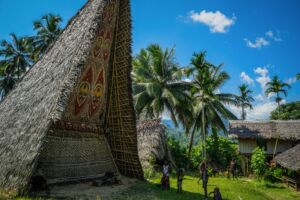
In Maprik, Leo talked with a few locals at the market from Lumi and Apangai and arranged us to visit them. A young boy hopped into the back of our truck and guided us on a dirt track up into the nearby hills. We cross muddy trails, shallow rivers, and climbed higher into the hills. Driving here takes some experience, but its incredibly fun!
The first stop was the village of Lumi. The chief met us at the entrance to his village and agreed to show us around Lumi, and Apangai for 50 US, which included both spirit houses, and anywhere within the village.
Lumi’s Haus Tambaran was very tall. The chief told us it was relatively new, as the old one was falling apart. The spirit house had red and white faces painted all over it, along with bird sculptures, and other regional deities. In the distance rolling hills of jungles, with the odd town poking out from the brush could be seen. The scene was beautiful.
After wandering the village, we drove to Apangai which was about 20 minutes away. Apangai Village is not as picturesque as Lumi nor it he outside of its Tambaran.
The real gem to Apangai is what lays inside it’s Haus Tambaran. Inside its sacred spirt house is an assortment of costumes, statues and masks all heavily painted in vibrant colours. Delve deeper into the house and you will crawl into a room dedicated to the local god. He stands six feet tall with his palms stretching forward. His eyes and face are brightly coloured and is surrounded by shell jewelry.

Staying with Tribes in Wamerak
From Apangai we dropped the Lumi chief off and headed towards Wamerak. Wamerak is not on the map, but if you would like to come stay here its easy to get to. From Maprik, take the beautifully new paved road to Pagwi. About 20 min in you will see a radio/phone looking station on your left. Take the dirt road to the right from here. When you cross a super sketchy bridge that my trucks wheels fell through twice, you have arrived in Wamerak.
Wamerak is famed for its art carvers. When tour groups visit the Sepik river to buy art, often the art they are buying is from Wamerak. Leo brought us to his cousin Markus’s house in Wamerak. Markus’s house was by far the nicest house in the village. Most houses here are huts made from natural materials. Markus’s house was on stilts and made from bamboo.
Markus was an interesting man, he was a strong believer in local folklore, but well educated and spoke impeccable English. He welcomed us into his home and his wife cooked us a great meal of sago, noodles, boiled spinach and the eagle I ran over a few hours earlier…. Yes, I am not kidding we smoked and ate road kill eagle.
Lucky for us we were also able to get some SP beer. A tip out here, always buy enough for your new Papuan friends, they will become your best friends and protectors for life because of this!
In the morning, Markus arranged all the local artesian to show us their work. They displayed colourful masks and weapons made from cassowary bones. My favourite purchase was one of the old shell currencies they used to buy wives with!
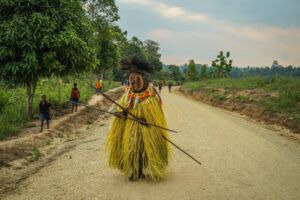
After we haggled over the stunning collection of art Markus brought us to the local spirit house for a ceremony. While driving here men wearing large masks covered in a sago leaf grass skirts emerged, these were the protectors of the spirit house. We had to ask their permission before entering the house. The man inside the outfit is believed to be possessed by spirits that protect the area.
Getting to the Sepik River – Arranging a Boat for the Sepik
In the morning we loaded up the truck and followed the newly paved highway to Pagwi. From Wamerak the drive takes one and a half hours before you pull into Pagwi.
When you arrive to Pagwi you quickly realise that coming here without a local who can translate and negotiate a boat would surely end in a disappointing waste of time. Pagwi has one guest house (was closed while I was there), a few shops selling snacks and whiskey, and a muddy docking area for all of the wooden banana boats.
Our guide Leo talked with a man down at the docking area about renting a boat. After one hour of intense negotiating a large man covered in the scarification crocodile skin approached us saying he would take us for roughly 80 USD per day, and extra for gas if we go past Palambei.
Read any guide book or website and it will tell you this price is impossible. I am telling you if you bring a trusty local, and drive yourself, it’s very possible to get local price.
Our boat driver left for his boat and after about two hours showed up with a shiny new metal boat with two big engines strapped on the back. No primitive banana boat for us!

Middle Sepik – Pagwi, Korogo, Yentchen
We were ecstatic to be on the river! We cheered, danced, and sang strange Papuan Songs with Stan and Leo. We did it, we made it to the Sepik, on a budget!
The engine of the boat hummed as we pushed further into the remote wilderness of the Sepik region. Every so often small villages would emerge from the densely forested jungle river banks.
“Look, Crocodile!” Stan would called out as he almost loses his hat in the winds
One hour in we pulled up to our first destination, Korogo. Korogo’s small community has the remnants of their great haus tambaran and the giant haus tambaran which has eagles on top of it.
A local man approached us while we docked and welcomed us to the village. Leo arranged a visit for 15 USD and our tour of Korogo began. Korogo’s old haus tambaran was massive, the remnants left are of the massive carved pillars. The town is also a pleasant walk, locals will invite you in to see their homes and show you their art.

After a few ours exploring Korogo we continued down river to Yentchen. Like Korogo, Yentchen has a similar Haus Tambaran that has recently been restored. Visiting the area can be done in an hour or less as the more interesting communities are further down river.
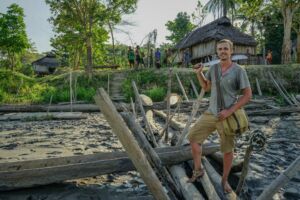
Palambei, and Kanganaman
Leaving Korogo behind us we continued further down the snaking river a few more hours before docking at a small village. From here, we walked two kilometres into the thick brush. As the dense jungles of Papua’s Sepik region eventually open we could hear drums beating, and every so often we would see a glimpse of a tribal Papuan wearing traditional grass skirts peering out at us from the brush.

There is a small skinny bridge made from a single palm tree that you must cross before entering the village of Palambei. After crossing we were awestruck by the massive Haus Tambarans. Palambei is actually two communities, with two different chiefs who keep their secrets from one another. We entered one of the main Haus Tambarans to find the drumming noise we had heard was actually a ceremony taking place.
Exploring Palambei is fascinating, you will pass by sacred stones that were believed to be fallen warriors, climb up the giant Haus Tambarans to peer out over the traditional village, and talk with locals covered in scarification to imitate crocodile skin.

Palambei was defiantly the highlight of the entire Sepik region for me! Palambei is also a great place to pick up Sepik art, as the artists here are renowned for their artisanal skills in painting and wood carving.
Kanganaman is located adjacent to Palambei across the river. Like Palambei it also houses a very large and well intact Haus Tambaran. Kanganaman is where we stayed overnight before heading back to Pagwi. The locals put on a show for us (for free!), and we spent the evening sipping on Sepik beer whilst creating friendships with our hosts. Oh, and don’t forget to go for a midnight swim in the Sepik!
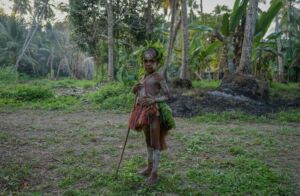
After a few nights exploring the Sepik River we headed back to Pagwi. Our bouat guide made a few stops to show us crocodiles, and we were back to the truck. The Sepik region is by far one of the most diverse and incredible regions of Papua New Guinea. A visit to this amazing nation would not be complete without visiting the Sepik River!
Sepik River Travel Video
Useful Information
Location: Sepik River Region, Papua New Guinea
Mode of Transport: Boat, and Truck
Tips: You will save massive amounts of money by driving yourself to Pagwi, the roads are decent but defiantly bring a guide!
Guide Book: Lonely Planet Papua New Guinea
Costs: 50 – 100 USD per day
Accommodation: Guides will take you to their families huts to stay in… don’t expect luxury.
Gear: Nomad Solar Panel, Lifestraw, Domke Shooters Bag


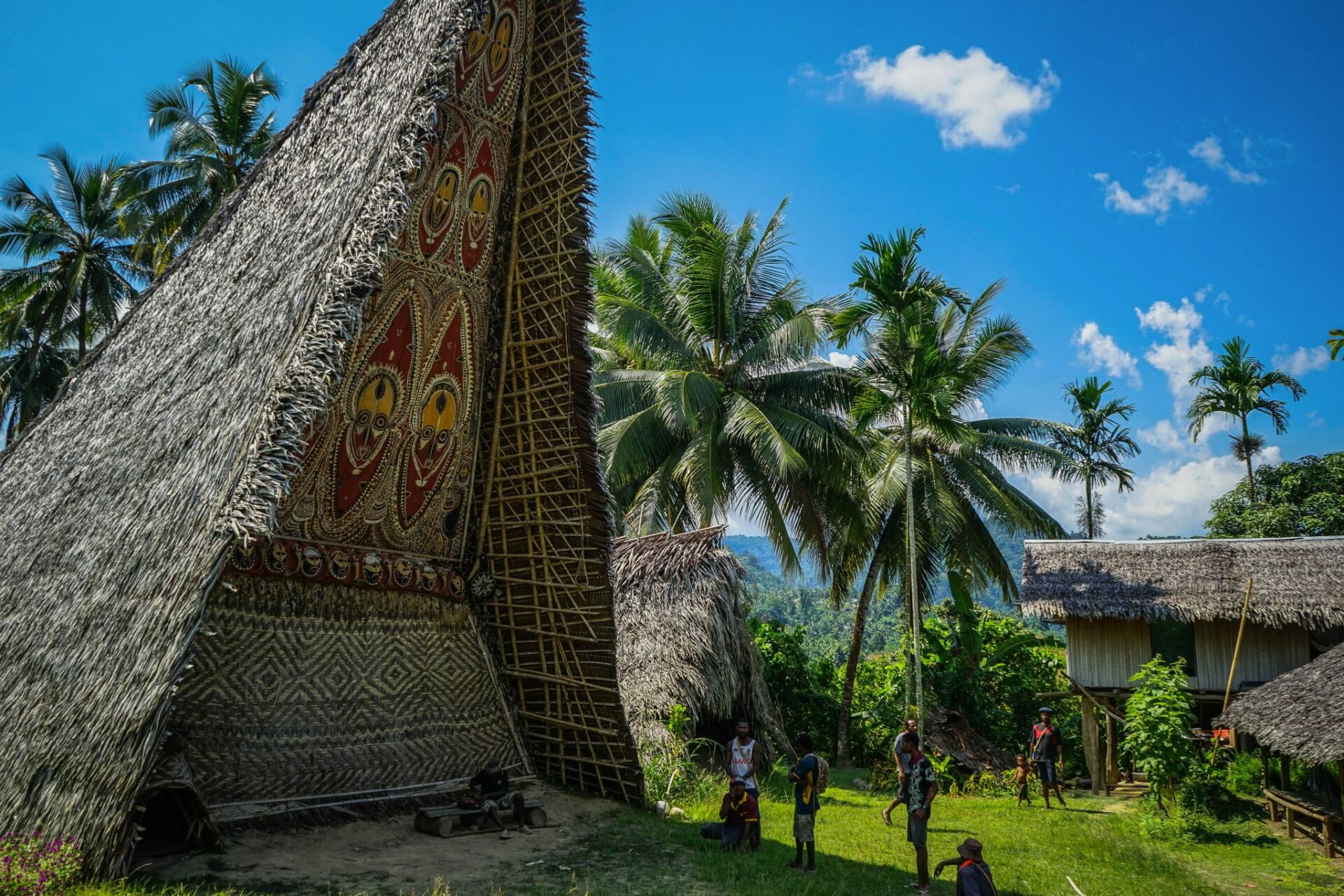





















Do you know something about tapioca Island? I love Papua NG and the most remote tribes, also from The Amazon (but maybe there is not much left)
Regards
Alina
Hi Stephen. This is probably one of the most fascinating blog posts about Papua New Guinea that I have ever stumbled upon. Being Indonesia’s direct neighbor to the east, PNG has been very intriguing to me for quite some time now. However, I have yet to get the opportunity to go there. May I know which month did you visit Wewak? It looks like the weather was perfect when you were there.
Stephen, can you please provide me with a phone number for your guide Leo?
Hi Stephen,
I hope you’re going well, thank you for your article it was really interesting. I’d love to go to PNG end of December and after recommendations (not really safe, needs to be well planned and have a guide) I looked into organised tour but it is way over my budget. I really want to go though it would be such an incredible experience for me. Do you have any contact there that would be happy to help me out for my trip for a more reasonable budget? That would be so helpful.
Thank you,
Eloise
Hi,
My girlfriend and me are planning to visit PNG this fall, we really want to visit the Sepik Region. Can you please provide me the phone number of your guide Leo?
Thanks,
Hey! he actually didn’t have a phone. He was recommended to me by the Wewak Hostel.